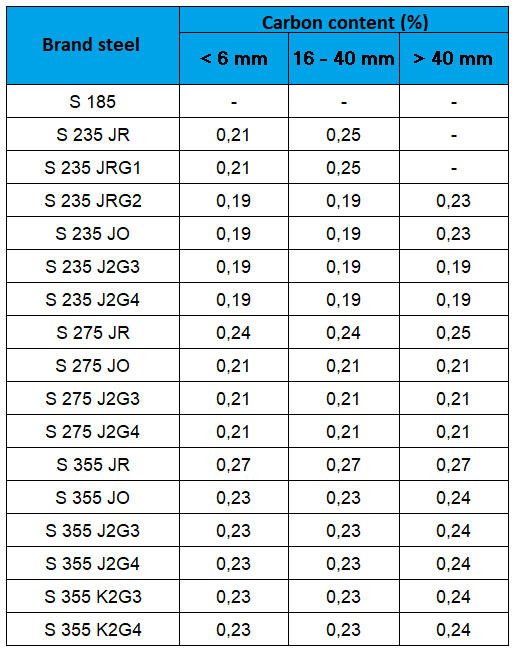Chemical composition of steel – influence of carbon

The chemical composition of steel is what defines the properties of steel. Depending on this characteristic, the different qualities of steel are differentiated.
Steel in general is an alloy of carbon and iron, but it contains many other elements. Of these, some are retained from the steelmaking process, other elements are added to produce specific properties.
The most common chemical elements in the chemical composition of steel, along with iron, are: carbon, manganese, silicon, phosphorus, sulfur, chromium, molybdenum, nickel, aluminum and vanadium.
D Each element that is added to the basic composition of steel has some effect on the properties of steel and how it reacts to manufacturing processes.
Carbon content between 0.02% and 2.11%.
CHEMICAL COMPOSITION OF STEEL – INFLUENCE OF CARBON

Carbon is the most important element in steel. It is essential in steels that need to be hardened by hardening, and the carbon grade controls the hardness and strength of the material, as well as the response to heat treatment (quality).
Carbon content between 0.02% and 2.11%.
The ductility, forging, and machinability will decrease as the amount of carbon increases, as well as the welding properties of the steel.
The higher the carbon content of steel, the higher the hardness, strength and wear resistance after heat treatment. Hardness and strength increase proportionally as the carbon content increases to about 0.85%.
As the carbon content of steel increases, the yield strength and tensile strength increase, but the plasticity and impact properties decrease. Additionally, carbon can increase the heat sensitivity and aging of steel.
Also, when the carbon content exceeds 0.23%, the welding performance of the steel will deteriorate.
Depending on the carbon content we can make the following classification:
- low-carbon steel, up to 0.3 % carbon;
- steel with a medium carbon content, between 0.3 and 0.6 % carbon;
- high-carbon steel, between 0.6 – 1 % carbon;
- steel with a very high carbon content, 1 – 2%.
Compared to the other elements found in steel (except boron), small variations in carbon content can radically change its properties and uses.
Thus, if steel with a carbon content of less than 0.7% C, it can be used as structural steel. In schumb, if the carbon content exceeds this value, they can be used as tool steel.
<< Inapoi